
GDR CEO and founder Kate Ancketill explains why the booming health and wellness market and the potential of NAD+ make cellular age reversal the beauty industry’s next big thing.
Harvard Professor of Genetics David Sinclair has been named by Time as one of the 100 most influential people in the world because he believes we can actually prevent all the diseases of old age by reversing the cellular damage that occurs in our bodies. That would eliminate cancer, diabetes, dementia, Parkinson’s, arthritis, and all the other ailments we currently associate with ageing.
Professor Sinclair’s best selling 2019 book, ‘Lifespan: why we age and why we don’t have to’, explains the importance of vitamin B3 derivative NAD+ (nicotinamide adenine dinucleotide). It’s a coenzyme that’s critical for maintaining the health of your DNA. It powers essential cell functions and energy levels and in middle age you have about half as much of it as you had when you were young, hence the greater lure of the sofa. We lose a further 50% every 20 years thereafter. By bolstering the supply of NAD+, he argues, you clean up the damage you’ve been subjected to by UV light, pollution, Xrays, CT scans, your diet and your own metabolism. This effectively reverses your ageing at a cellular level.
“As a scientific definition, I’m proposing that aging is a loss of information – the information that keeps our cells healthy, the information that tells the cells which genes to read throughout our lives,” says David Sinclair. “And aging is a manifestation of cells losing their ability to read the right genes at the right time, which leads to cells losing their identity and tissues failing.”
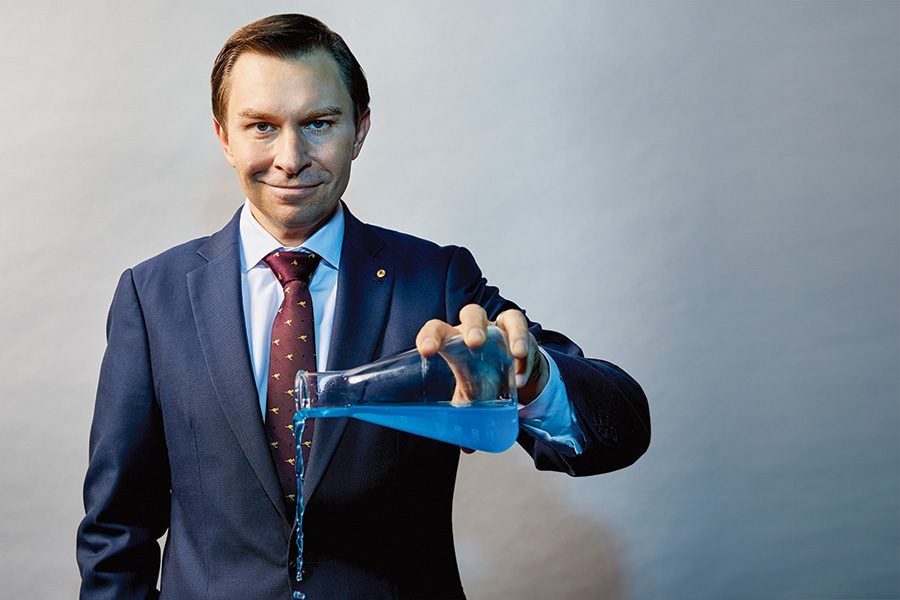
Healthspan over lifespan
We know that some living plants and animals either don’t age or age very slowly; there are (literally) immortal jellyfish, and long-lived mammals that repair themselves and live well into their second or even third century. There are seven ‘blue zones’ in the world – where centenarians remain in sprightly, good health. These include: Okinawa in Japan, Ikaria in Greece, the Ogliastra Region in Sardinia, Loma Linda in California and the Nicoya Peninsula in Costa Rica. To date, research indicates the causes to be a combination of active lifestyle, Mediterranean diet, absence of stress and presence of community.
Ageing, Sinclair believes, is an illness that can, and should, be cured and his research suggests NAD+ can produce results far beyond what we’ve seen in these blue zones. Indeed, with NAD+ he’s managed to double the lifespan of lab-mice. These old mice aren’t grumpy, overweight and greying; they’re breaking their exercise wheels and retaining their youthful vigour till the day they expire. It’s healthspan that matters – not lifespan. Think 80-year-old with the health and energy of a 30 year old. Think productive, wise, active members of society rather than care home residents.
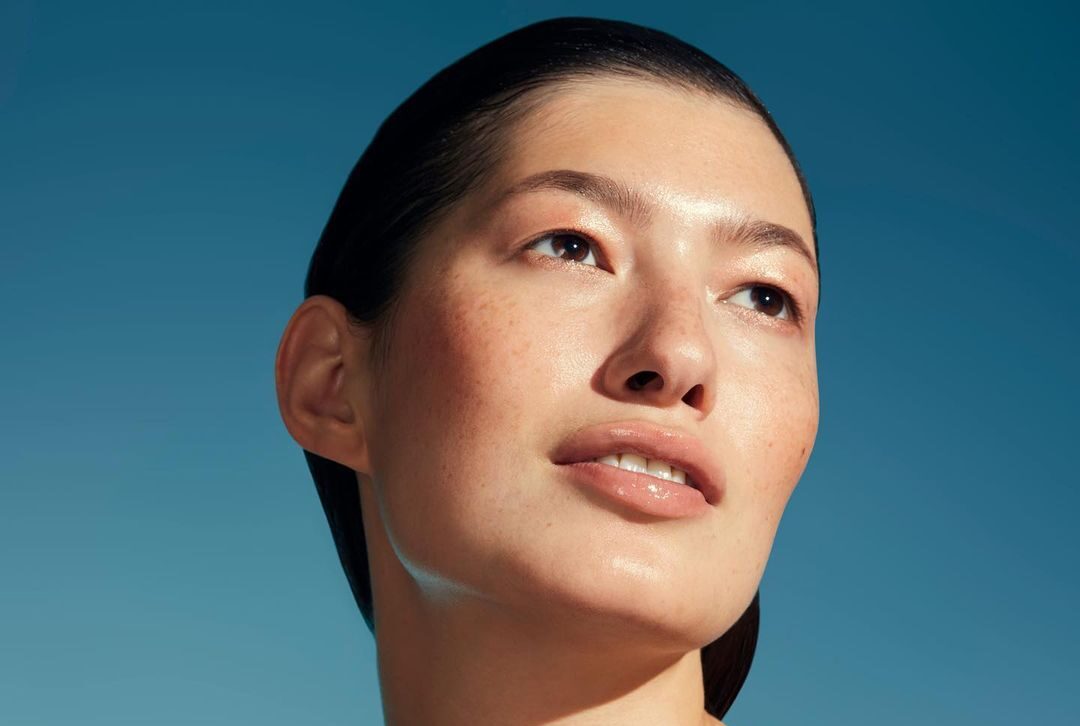
Spreading the word of NAD+
Mice aren’t the same as humans, of course. Human trials are ongoing, but it costs a billion dollars and takes ten years to get a drug approved, which is why the naturally occurring coenzyme NAD+ remains in the much less regulated supplement camp, relying on influencers and word of mouth to spread the news.
And the news is certainly spreading. The NAD+ industry is exploding, starting with supplements (Elysium Basis, Nuchido Time, Tru Niagen for example), then expanding to intravenous infusions, which were for many years used by rehab clinics in South Africa, but have recently moved into the celebrity and executive self-care category. Top hotel spas like The Beaverbrook in Surrey, UK offer them, in partnership with the UK’s NAD Clinic.
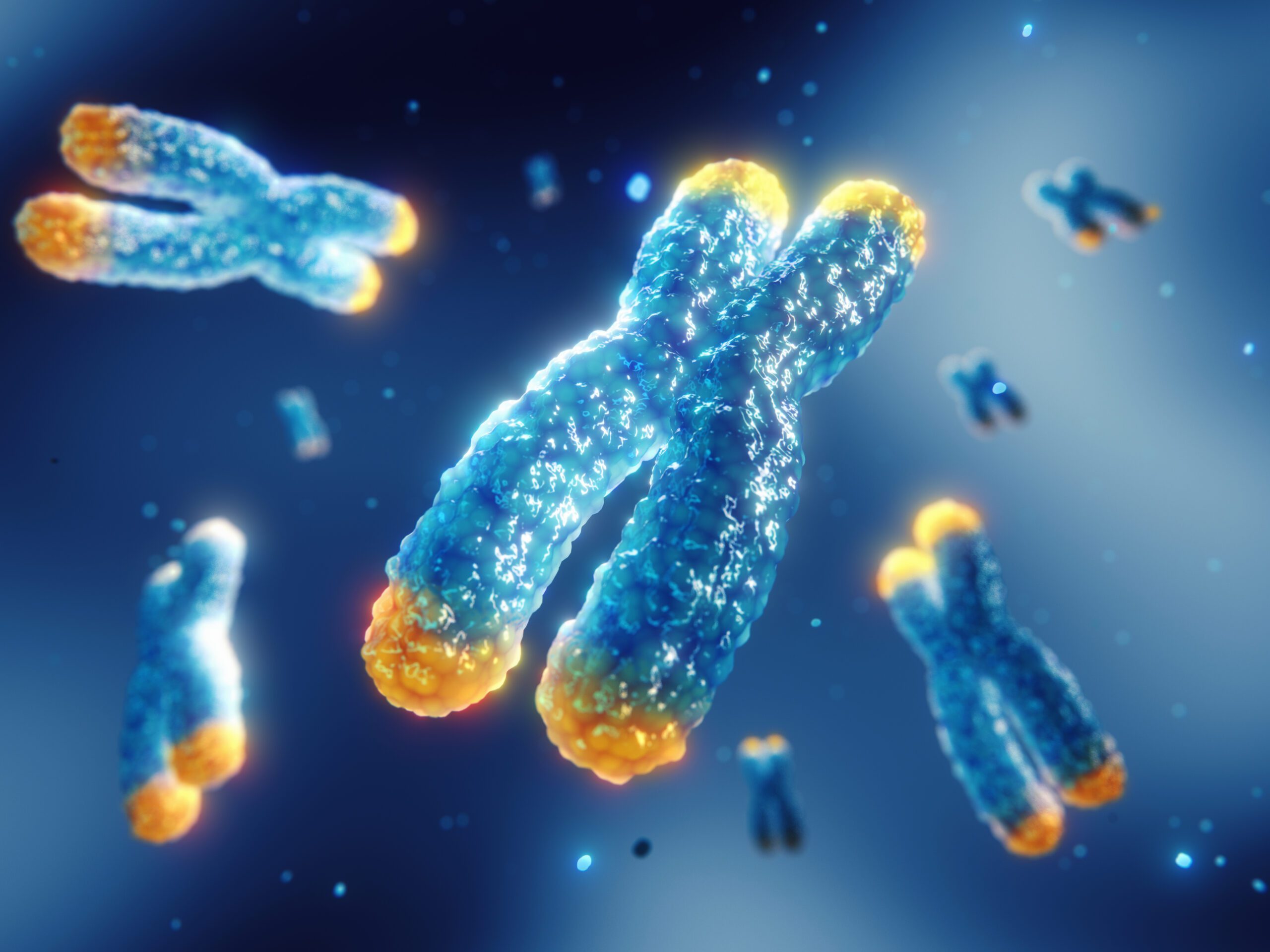
The NAD+ infusions offered at wellness destinations like these help to reverse our aging by boosting the telomeres in our DNA, which play a key role in maintaining the health of our cells. Telomeres protect the ends of chromosomes from becoming frayed or tangled, yet each time a cell divides, the telomeres become slightly shorter. Eventually, they become so short that the cell can no longer divide successfully, and the cell dies. The number of old, senescent cells increases as we age, but NAD+ stops the telomeres from shortening with each cell division, thus stopping the ageing process at a cellular level.
No pain no gain
Once you’ve experienced an infusion you realise why they’re expensive (£300-£700 a go). It’s a skilled job for highly trained medical professionals. Look away now if you’re needle-phobic. There’s no getting away from it; infusions require the insertion of a canula into the elbow, wrist or back of your hand, which isn’t everyone’s idea of pampering.
NAD+ infusions can be hard for some people to tolerate (harder for women than men, harder if you’re not already taking NAD+ precursor supplements). You feel it as soon as it enters the bloodstream. I tried it, and for me it felt like a heavy, leaden liquid moving up my arm and settling like a lead football in my stomach. Not painful, but weird, as if you’re about to faint.
It can take two or three hours, either at the clinic or at your own home, where the nurse keeps an eye on you while you read, watch TV or work. You get used to it the more you do it, but you wouldn’t do it for fun. You do it for the results. These are: text-book great sleep; passing out instantly, waking up full of beans seven hours later, perfect skin, and a significant energy boost that lasts weeks.
Quantifying the growth of NAD+
In an attempt to contextualise the rise of NAD+, we’ve deployed GDR’s proprietary AI research tool to track the growth in global articles mentioning NAD+ and associated terms, such as cell senescence, telomere lengthening and intermittent fasting.
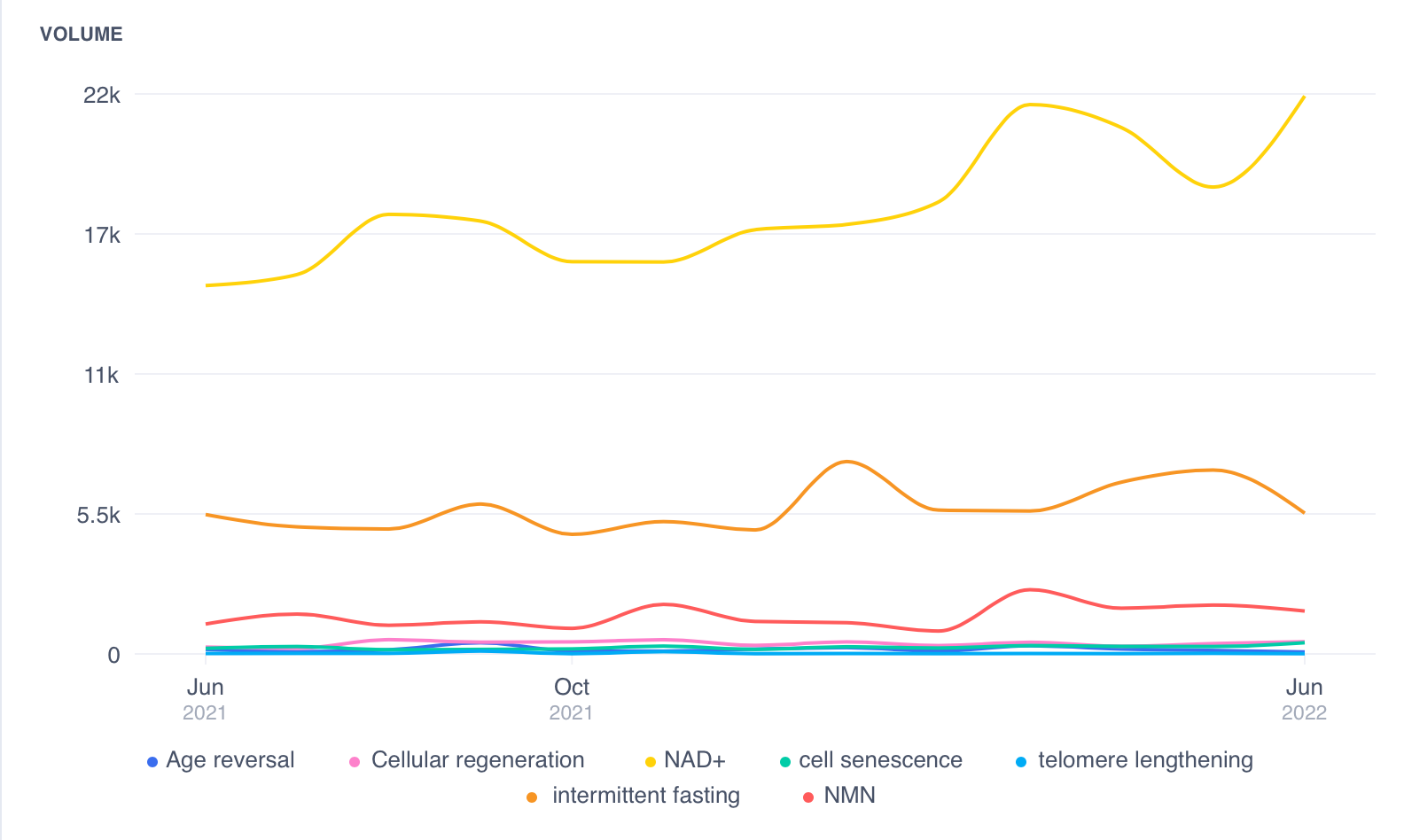
The results show that global articles mentioning NAD+ have gone from 14,000 per month in June 2021 to a peak of 22,000 per month in both March and June 2022. This significant year-on-year rise of 64% underlines the rising awareness of the NAD+’s disruptive potential.
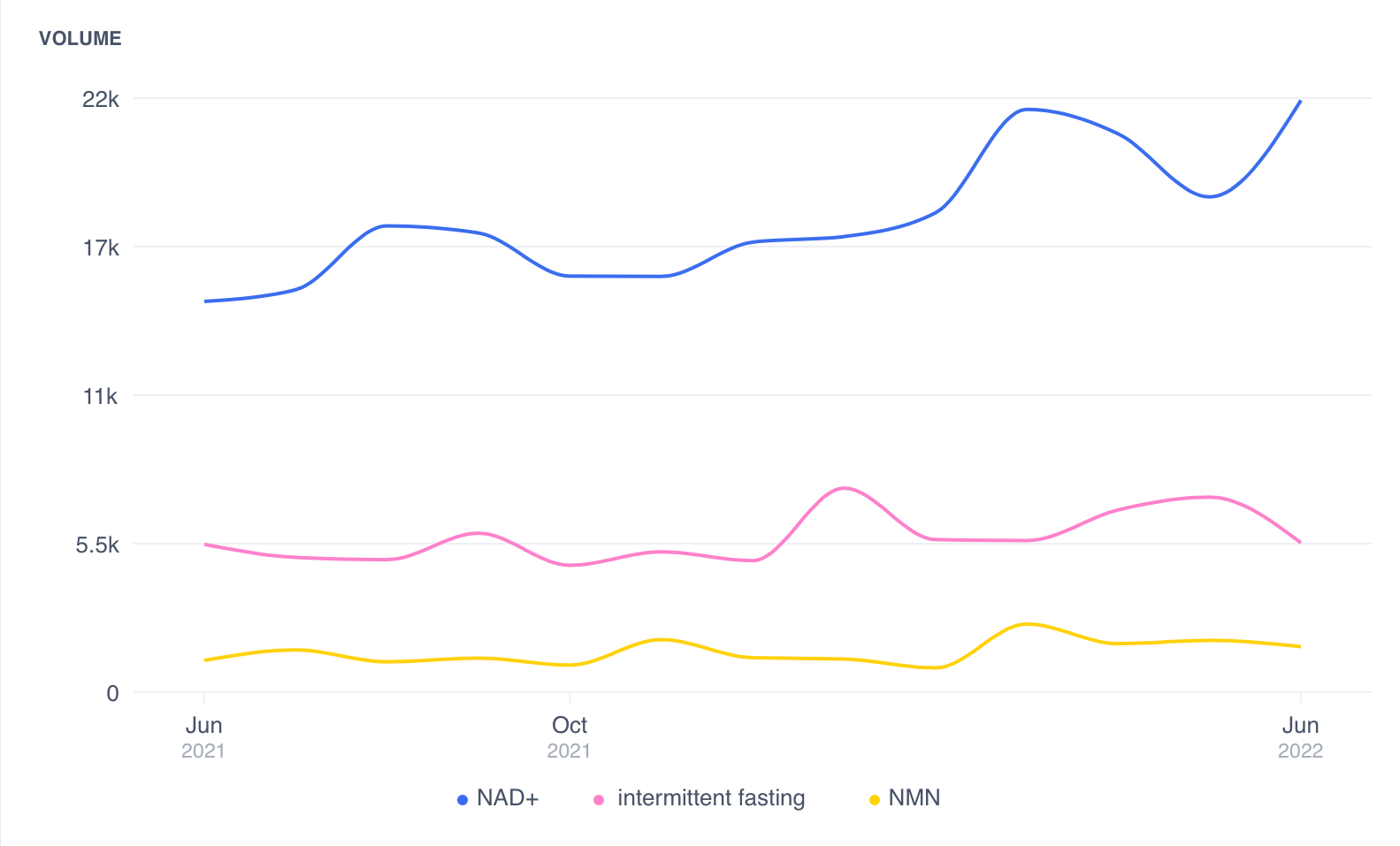
There has been a smaller growth in the incidence of articles mentioning “intermittent fasting” and NAD+ precursor “NMN”, with both categories showing strong peaks during some months before reverting to the norm. This implies the growth in these areas is less sustained and is being driven by a small number of key events or launches.
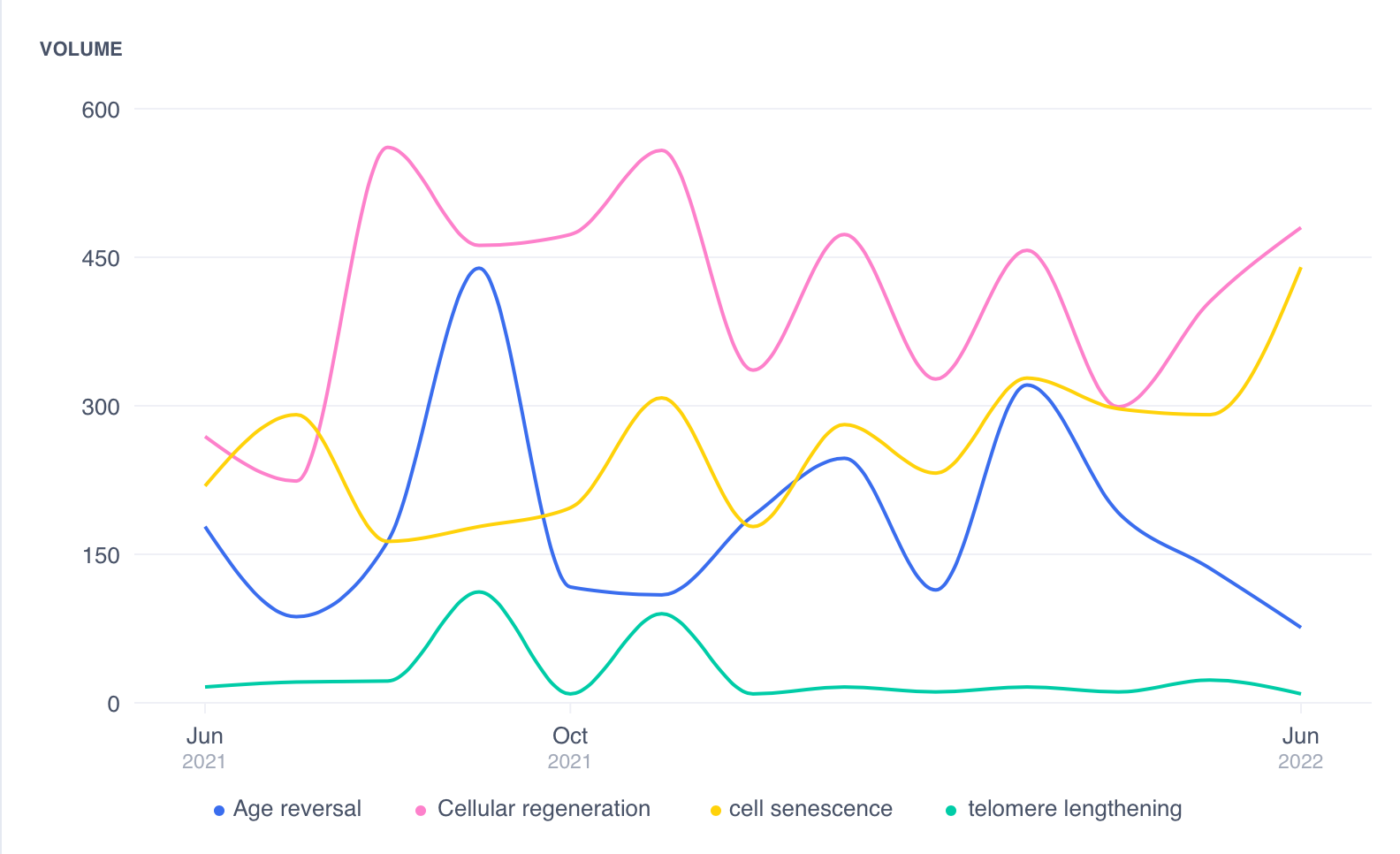
Finally, the number of articles using the words “age reversal”, “cellular regeneration”, “cell senescence” and “telomere lengthening” has remained very low and has fluctuated very erratically during the last 12 months showing these terms are still in the early emerging stage.
The next big thing
I predict that the next big market expansion will be cosmeceuticals containing NAD+. Intuisse is a cold-chain NAD+ skin cream that’s launching in the UK in September 2022, created by a molecular cardiologist, a gene-splicer and organic chemists. Unlike existing NAD+ skin topicals, it has a patented liposomal delivery method, which means the active ingredient is housed inside a liposome, a spherical sac containing fats, that mimics cell membranes. The liposome acts like a trojan horse, allowing the NAD+ to get right into the heart of the body’s cells. NAD+ is too large a molecule to penetrate the skin without this liposomal method, I’m reliably informed, and Intuisse’s clinical results are off the charts. They show actual cellular regeneration and reduction in senescent, or ‘zombie’ cells in the skin.
In my view this represents the future direction of the beauty industry towards reversal of cellular damage, creating a literally younger you.
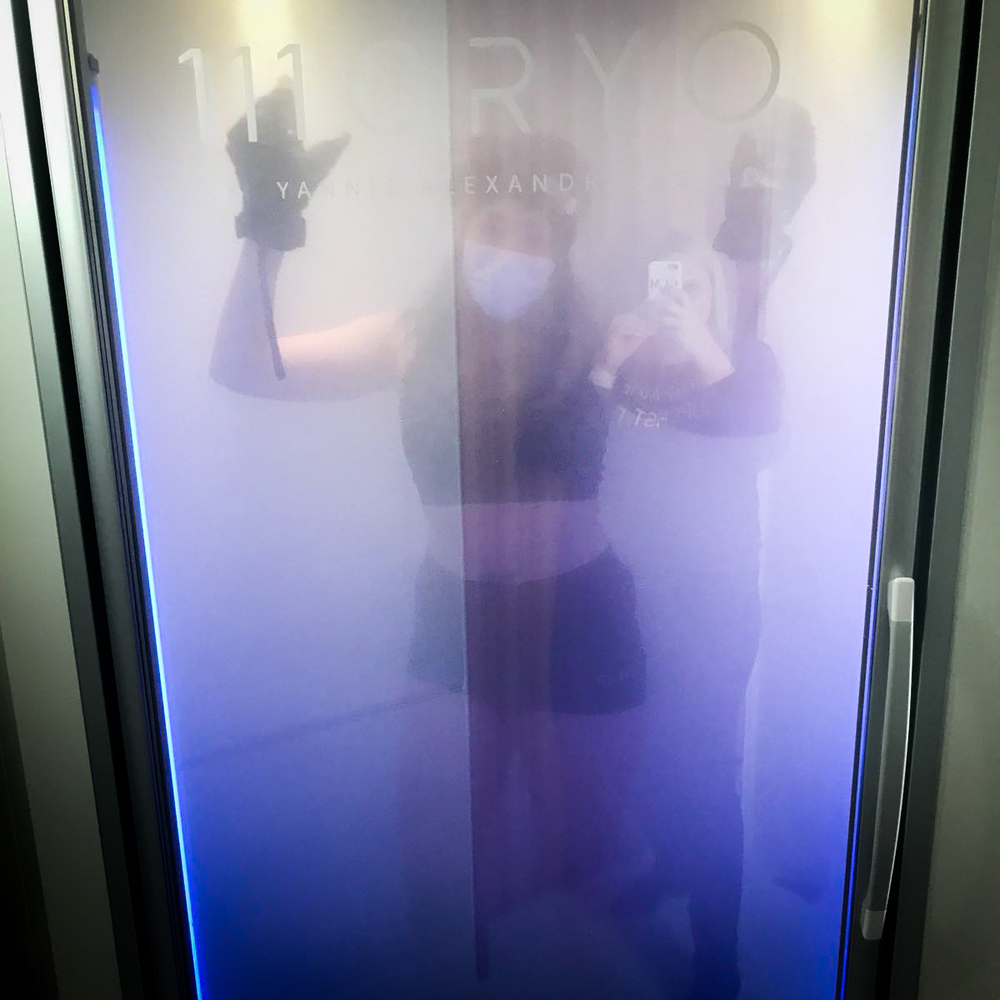
For those not inclined to supplements, infusions or luxury priced skin cream, there’s good news: you can boost your NAD+ naturally according to Prof Sinclair. Extreme exercise, calorie restriction (or at least, intermittent fasting) and extreme cold will do it. Cryotherapy is now offered on many high streets and department stores like the Harrods Spa and Harvey Nichols, where the 111 Cryo salon offers three-minute wellness sessions at -85° Celsius.

Health span life hacks
The growing community of NAD+ converts tend to be interested in the science behind age reversal, tuning in to podcasts with founders and following advances in research. They are the perfect audience for peer-to-peer social marketing, and for customised nutrition plans based on blood fat, blood sugar and microbiome tests offered by the likes of Professor Tim Spector’s Zoe. 200,000 people in the UK are on the waiting list for this service, which is currently only available in the US.
Whilst the subject of cellular regeneration, telomere lengthening and reduction in senescent cells is brain-squeezingly complex for the lay person, there are some simple life hacks that stand out as easy, quick and cheap. If skipping breakfast really does nudge your health span into parity with your lifespan, it’s a no-brainer.
Prof David Sinclair is 53 but claims a biological age 20 years younger, according to his bio-markers. This is what he takes daily, according to his best-selling 2019 book:
• 1 gram of NMN (a precursor to NAD+, which is too large a molecule to be consumed directly)
• Vitamins K2 & D, and 83mg of aspirin
• 1 gram of Resveratrol (the anti-oxidant that’s in red wine),
• 1 gram of Metformin (prescription-only anti-diabetic drug that lowers blood sugar)
He exercises regularly, takes the stairs, keeps his body temperature cool, skips at least one meal a day, avoids fast carbs like sugar, pasta and bread and hasn’t eaten a desert since he was 40.
Taking health and wellness to include personal care/beauty, fitness, nutrition, personalised and preventative medicine and weight management, the industry has seen robust growth in recent years. Research and Markets values the sector at $3,294 bn globally in 2021 with an expected compound annual growth rate of 4.2% during 2022 – 2027.
Whilst acknowledging that many consider this a first-world problem, there’s no doubt in my mind that age-reversal science is here to stay, and on the trajectory of steep growth.









